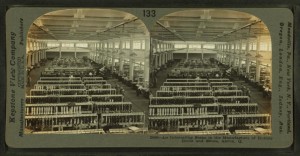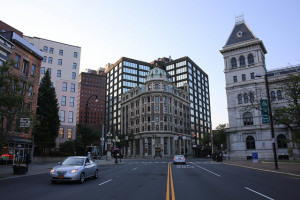Welcome to the era of brainbelts.
A brainbelt is a term coined by Antoine van Agtmael and Fred Bakker to talk about the transformation of traditional rustbelt cities in the U.S. and Europe into centers of global innovation. van Agtmael said in remarks at the Brookings Institution last week that American and Northern European cities “have stopped trying to compete on the basis of the lowest cost and are instead competing in making things as smart as possible.”
Brainbelts are an emerging trend to watch.
The authors have written a new book, The Smartest Places on Earth, that explores how brainbelts have emerged — and how this could realign the economic balance between the so-called industrial nations and emerging economies. I’ve just started reading the book, but I have a few early takeaways from it and the Brookings discussion.

1. There are over 30 brainbelts in the U.S. The authors focused on five — Research Triangle Park (NC), Albany, Akron, Minneapolis-St. Paul, and Portland (OR). Akron, for example, is the center of polymer research. This has resulted in such innovations as the creation of new anti-corrosion coatings that has applications in everything from steel bearings to heart stents.
2. You can’t operate in a bubble. The brainbelts evolved out of necessity — the existing economic infrastructure was crumbling and something new had to take its place or the cities would die. (Think Flint, MI, which has not yet recovered from the collapse of the auto industry.) This means that brainbelts recognize that economic prowess is not guaranteed. “People in brainbelts recognize that the region has been hit before and could be threatened again,” write the authors. “This leads to a strong sense of identity, regional price, and activities of continuous improvement.”

3. It’s a macrowiki world. In Macrowikinomics, authors Don Tapscott and Anthony Williams posited that successful organizations have to embrace collaboration, openness, sharing, integrity, and interdependence to succeed. This is essentially the structure of a brainbelt. The authors of Smartest Places describe brainbelts as driven by a connector and operating in a collaborative ecosystem of contributors “with research universities at their center and typically composed of start-ups, established companies with a thriving research function, local governments, and community colleges or similar vocational institutions.” Other key characteristics include:
- addressing complex, multidisciplinary, and expensive challenges (that no one person or organization can do)
- addressing just one or two disciplines (e.g., medical devices, semiconductors, agribusiness)
- physical space
- creating an environment that attracts talent
- available capital
4. This is a maker model. The authors don’t use this term (or at least didn’t in their talk last week), but this is very much a manufacturing model. It’s not about generating ideas per se, but about building smarter things and solving 21st century problems. “The brainbelt model not only involves a new process for generating ideas,” write the authors, “it revolutionizes how these those ideas are realized as products and technologies.” Think 3D printers, sensors, and robotics.
Smartest Places is about brainbelts, but it’s ultimately about rethinking how businesses operate and throwing out the old, siloed, everyone-is-competition model. Bob Geolas, the CEO of Triangle Research Park, said that brainbelts are a shift away from the top-down, robber-baron-directed model toward “a wildly more organic approach that is really very disruptive and innovative.” While we don’t all live in a brainbelt, that doesn’t mean we can’t harness the same elements in our own businesses to collaborate and thrive.
Albany by pasa47 (Flickr).



